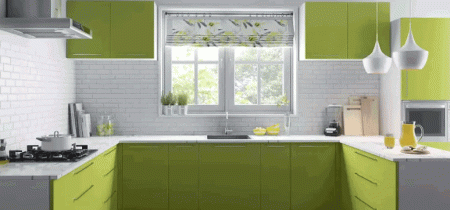One of the major problems with kitchen sinks is the water that builds up around it. Water leads to soap scum and mold around the sinks’ rim on top and on the bottom.
Cleaning your kitchen sink’s rim is not an insurmountable problem. But constant cleaning gets old quickly, especially when you have so much else to clean in a kitchen.
Other than a relatively few integrated kitchen sinks where the countertop and sink are all a single molded unit, most kitchen sinks are units separate from the countertop. They fall into one of two categories: drop-in sinks or undermount sinks. One clear advantage of undermount sinks is that they help you avoid the water build-up problem.
Drop-In Sinks vs. Undermount Sinks
Drop-in and undermount sinks both have their advantages and disadvantages. Drop-in sinks are easy to install since they simply drop, or sit, into the countertop cutout and are supported by a rim resting on the countertop itself. But because the rim is raised up above the surrounding countertop, water can spill out onto the countertop.
Undermount sinks have no problems with water spillage onto the countertop since they hang down below the top of the countertop. Undermount sinks are considerably harder to install since their heavier weight is suspended from the bottom of the countertop with clips and adhesives.
This makes an undermount kitchen sink particularly susceptible to leaking around the recessed edge of the sink—the seam where the top lip of the sink meets the underside of the countertop. Unless the sink has been installed perfectly, you may well find that water leaks around this seam, spilling water onto the floor inside the sink base cabinet.
Drop-in sinks (also called self-rimming) drop in from the top and hang via the rim of the sink. In sharp contrast, undermount sinks are those that are secured beneath the cutout opening in the countertop, essentially hanging from the bottom of the countertop.
Re-Sealing an Undermount Sink
Whether you installed the undermount sink yourself or had it installed by a pro, it’s not uncommon for leaks to develop in a matter of days or weeks after the installation. When this happens, the problem likely has one three causes.
Poorly Prepared Countertop Bottom
The bottom of the countertop (where it contacts the sink) may not have been cleaned thoroughly. Denatured alcohol should be used to clean off all surfaces prior to caulking. Dust on granite or solid-surface such Corian or Silestone can often compromise the caulking and should be cleaned up before installation.
Insecure Clamps
In other cases, the bottom was thoroughly cleaned but the installation was not secure enough. The clamps or the epoxy, or both, used to secure the sink to the bottom of the countertop were loose enough to cause the caulk to quickly pull away.
Wrong Sealant Was Used
The sink installer may have failed to use a true kitchen sealant. Most undermount sink manufacturers recommend that you use pure, 100-percent silicone sealant for undermount sink installation. Silicone sealants are designed for resilient flexibility and have good adhesive properties. If an ordinary caulk was used to seal the sink, it likely will fail quickly.
How to Fix Undermount Sink Leaks
Though the process is cumbersome, you can likely remedy leaks on an undermount sink by yourself.
- Start by crawling under the sink and checking to make sure the clamps are securely holding the sink to the bottom of the countertop.
- From inside the cabinet, apply new 100-percent silicone sealant to the seam around the sink.
- If you make sure the sink is tightly clamped, then you can try to recaulk and assess if it has eliminated any leaking.
The best solution is to entirely remove the sink and re-seal the sink to the countertop.
- Shut off the water.
- Remove all of the plumbing supply and drain pipes.
- Unclamp the undermount sink from the countertop.
- If the silicone caulk is old enough and has been failing, it should be relatively easy to pull the sink away from the countertop.
- With the sink removed, scrape away as much caulk as you can from the top flange of the sink.
- Clean the surfaces thoroughly with denatured alcohol.
- With the joint clean and dry, apply a thin bead of the recommended silicone sealant to the top flange of the sink.
- Re-install the sink quickly, before the silicone sealant cures.
- Clamp into place.
- With a clean rag, wipe away any sealant that may have seeped through either side of the sink.
Read the full article here














